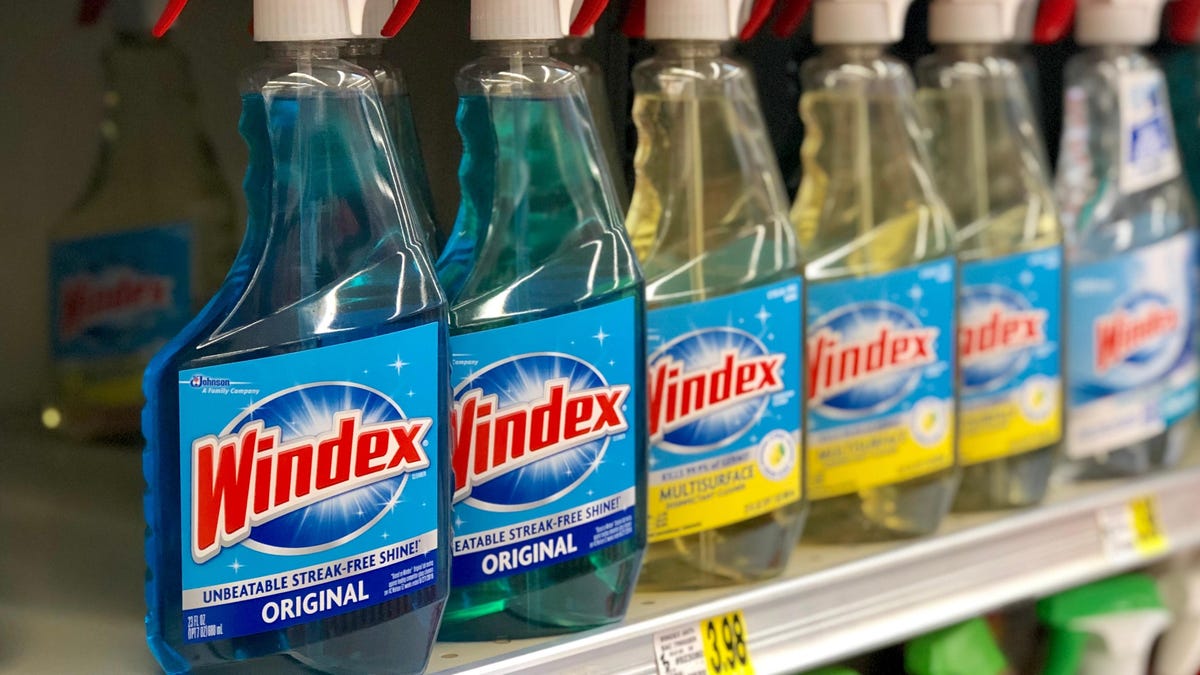10 Surprising Ways to Use Windex Around Your Home
Turns out, the dad in My Big Fat Greek Wedding was right. Windex can do way more than just make your windows spotless. (But don’t spray it directly on your skin—he was wrong about that part.) Read more...


Photo: jadimages (Shutterstock)
Turns out, the dad in My Big Fat Greek Wedding was right. Windex can do way more than just make your windows spotless. (But don’t spray it directly on your skin—he was wrong about that part.)
From moving heavy furniture and freeing stuck zippers to cleaning jewelry and repelling insects, there are many other ways you can put that $4 super-cleaner to good use around your home.
2 / 12
Moving large appliances and furniture
Moving large appliances and furniture

Photo: Syda Productions (Shutterstock)
If you need to move your fridge or a heavy pull-out couch to a new location but it just won’t budge, liberal spritzes of clear-colored Windex in front of the object’s “feet” should do the trick (don’t use the type that has blue dye). It’ll make the floor slippery enough to slide the large appliance or piece of furniture along its path. (Be sure to use the ammonia-free version on wood floors, so as to not damage them.)
De-grease your kitchen

Photo: Maridav (Shutterstock)
Range hoods, exhaust fans, microwaves, and the backsplash around your stove can take a greasy beating from all those cooking oils. Spray Windex on grimy surfaces and let sit for 10 minutes to allow the ammonia and rubbing alcohol to work its magic, then wipe away. (You may want to follow up with a soap and water rinse.)
Shine jewelry

Photo: Kwangmoozaa (Shutterstock)
We’ve seen many a jewelry-cleaning hack circulating around the internet that actual jewelers disavowed as dangerous for your baubles. But, according to many fine jewelry websites, Windex is, in fact, safe to clean certain jewels, including diamonds and other hard gemstones. According to Leaf.tv, “Windex is safe for gold and silver jewelry. It can also be used on diamonds and hard gemstones. However, do not use it on emeralds, coral, opals, pearls, amber or turquoise.” Simply spray on and scrub with an old toothbrush before rinsing with warm, soapy water. Or you can do as The Knot suggests, and mix a solution of 50% Windex and 50% hydrogen peroxide and let it soak for 10-15 minutes.
5 / 12
Restore a dry-erase board to its former glory
Restore a dry-erase board to its former glory

Photo: RealPeopleStudio (Shutterstock)
As anyone who’s used the same dry erase board for a while (or has a school-aged child who demolishes theirs daily) knows, the eraser often leaves substantial streaks behind. When just a damp wash cloth won’t do, spray Windex to easily wipe away the dark smudges with a microfiber cloth or paper towel, and help that whiteboard live up to its name.
Repel insects

Photo: RHJPhtotos (Shutterstock)
Humans aren’t the only ones who don’t like the smell of ammonia. Reportedly, some household insects (like ants) also are turned off by the scent. Try spraying it around the perimeter of doors and windows that are known to be main entry points.
Remove clothing stains

Photo: LanKS (Shutterstock)
Windex can help loosen stains from food such as tomato sauce, ketchup, and red wine (only on strong fabrics, though—no silk or other delicates). The Kitchn recommends “lightly spraying the stain with Windex, letting the garment sit for up to 20 minutes, then blotting with a clean cloth and rinsing with cool water. Finally, throw it in the wash.” Only use the clear Windex here—not blue.
8 / 12
Spruce up outdoor furniture
Spruce up outdoor furniture

Photo: daphnusia (Shutterstock)
When all that time outdoors starts to catch up with your (aluminum, plastic, or glass) deck or patio furniture, Windex does a good job of giving it a fresh, clean look. Spray, let it sit for 5-10 minutes, and wipe away—or according to the Penny Hoarder, you can “go the extra mile and snag the Windex Outdoor Concentrated Cleaner, which is a 32-ounce spray bottle that attaches onto a hose ($27.66). Spray onto your aluminum siding, your brick, your windows — and with this tool, you won’t even need a ladder to do it.”
Free a stuck zipper

Photo: Chester Hoth (Shutterstock)
The same slippery properties of Windex that aid in moving heavy furniture can be put to good use on your next zipper that won’t budge. Give a spray, let it sit for a moment to lubricate the teeth, and try again.
10 / 12
Tackle toilet bowls, faucets, and bathtubs
Tackle toilet bowls, faucets, and bathtubs

Photo: Alexander Raths (Shutterstock)
Rather than bringing three separate cleaning products into your bathroom, try Windex—which not only cleans mirrors and shower doors, but can also be used inside toilets and bathtubs. Simply open the windows to allow for ventilation, spray, and let sit for a few minutes before scrubbing. It’s also effective at removing water smudges from metal faucets and making them shine.
11 / 12
Clean your car’s interior
Clean your car’s interior

Photo: Nomad_Soul (Shutterstock)
Who needs Armor All when you’ve got Windex? According to Bob Vila, “Windex is a great cleaner for inside your car, getting rid of built-up gunk on windows, dashboards, steering wheel, and upholstery. It’s non-greasy, so it won’t leave everything slippery nor damage the upholstery and faux wood surfaces.” While Windex can cause discoloration on leather, your car’s interior is likely not genuine leather (check the manufacturer’s details). It can easily tackle window and mirror smudges—and also be used to clean bugs and tree sap from your car’s exterior. (No word on whether it conquers bird poop, but we’re hopeful.)

 Tekef
Tekef 
































